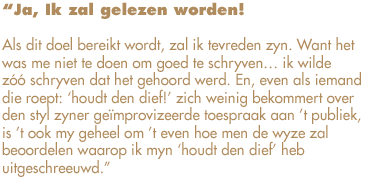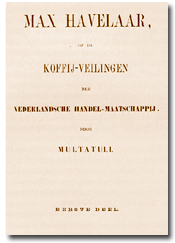


(Max Havelaar, of De Koffieveilingen der Nederlandsche Handelmaatschappij,
ed. Annemarie Kets-Vree, 1998, p. 337)Multatuli wanted his “stop thief!” to be heard. So, he wrote in such a way as to be read by the widest audience possible. And he succeeded. His Max Havelaar became the most famous and most controversial Dutch prose work of all times, translated world-wide into thirty-four languages, amongst which are the Indonesian translation by H.B. Jassin in 1972 and most recently a Korean translation. Today, the novel is as much alive as when it first appeared in 1860. The case of its hero, Douwes Dekker’s alter ego Max Havelaar, continues to be ##the subject of polemic and public debate in the Netherlands, dividing the country into so-called ‘Multatulians’ and ‘anti-Multatulians’. The debate is centred around one question in particular: ##the factual truth of the book. Ironically enough, it is the novel itself that forces his readers to ask this question. Multatuli might have said that he wasn’t troubled at all about the style of his “improved address to the public”. And at glance, Max Havelaar may appear to be a chaos of styles and incongruent structure, or, as the literary critic and writer D.H. Lawrence wrote in the preface to the second English translation (1927): “the greatest mess possible”. But, when reading the book more carefully, its rather too chaotic composition turns out to be a well-constructed web of styles and narrative forms, that makes the novel into the literary masterpiece it is (even Lawrence had to recognise that), which marks the beginning of modern Dutch literature and has the question of truth at its heart.
A picture of the title page of Max Havelaar (Multatuli Museum, Amsterdam).
However, the truth of Max Havelaar is not simple and non-pluralistic, subject to scientific verification. The novel’s truth vividly alternates with its narrators and their different viewpoints. The use of multiple narrators, as in Wilkie Collins’ The Woman in White (1860), is one of Multatuli’s many literary innovations. His book is an unsettling mix of voices and narrative forms, including not only dialogues, letters and stories, but also contracts, documents and lists, together with sermons, poetry and all kinds of notes and digressions.
Click >here to continue.

